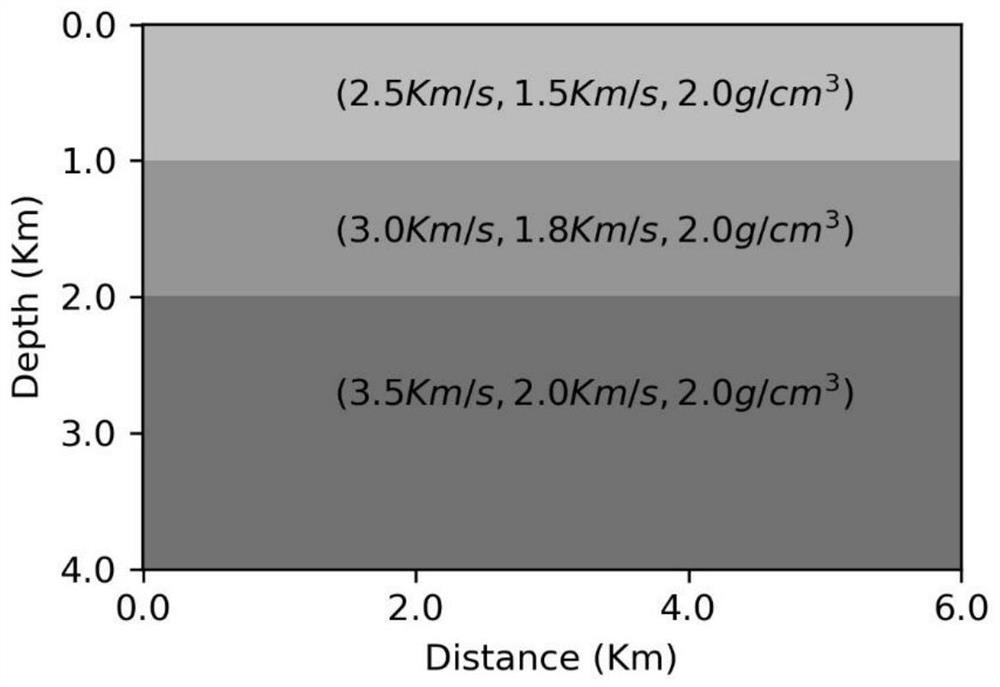A Method for Separation of P- and S-waves without Separation Artifacts
A separation method, a technology of longitudinal and transverse waves, applied in seismology, instruments, measurement devices, etc., can solve the problems of separation illusion, physical meaning and wave field inconsistency of vector characteristics.
- Summary
- Abstract
- Description
- Claims
- Application Information
AI Technical Summary
Problems solved by technology
Method used
Image
Examples
Embodiment
[0115] In 2D case, take figure 1 The three-layer model of is used as a calculation example, and the total wave field obtained based on the forward modeling of the first-order velocity-strain equation is as follows: image 3 As shown, the longitudinal and transverse waves are separated through the above-mentioned longitudinal and transverse wave decoupling equations, and the vector P wave and S wave fields obtained from the separation are as follows Figure 4 shown, where Figure 4 (a) is the separated P-wave x component, Figure 4 (b) is the separated P wave z component, Figure 4 (c) is the separated S-wave x component, Figure 4 (d) is the separated S-wave z component.
[0116] Simultaneously, extracted the waveform figure at x=2Km again, as Figure 5 shown, where Figure 5 (a) The total wavefield x-component, the separated P-wave x-component and the separated S-wave x-component are given, Figure 5 (b) shows the total wavefield z-component, the separated P-wave z-com...
PUM
 Login to View More
Login to View More Abstract
Description
Claims
Application Information
 Login to View More
Login to View More - R&D
- Intellectual Property
- Life Sciences
- Materials
- Tech Scout
- Unparalleled Data Quality
- Higher Quality Content
- 60% Fewer Hallucinations
Browse by: Latest US Patents, China's latest patents, Technical Efficacy Thesaurus, Application Domain, Technology Topic, Popular Technical Reports.
© 2025 PatSnap. All rights reserved.Legal|Privacy policy|Modern Slavery Act Transparency Statement|Sitemap|About US| Contact US: help@patsnap.com



